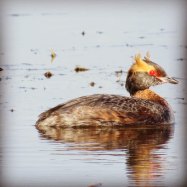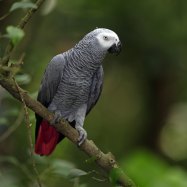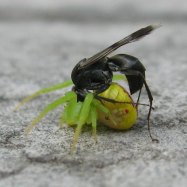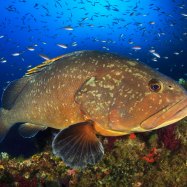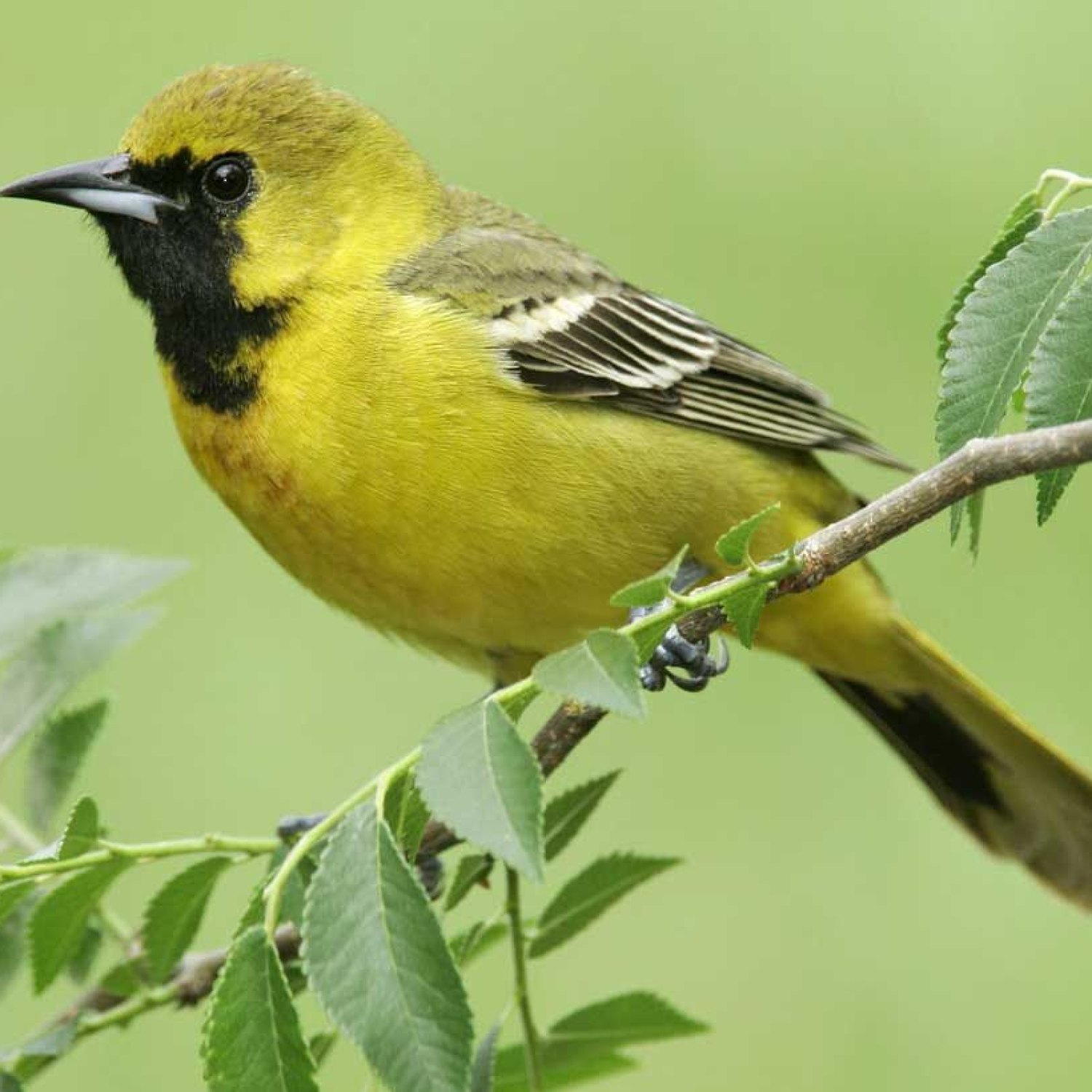
Orchard Oriole
16 - 18 cm
The Orchard Oriole is a small, slender bird with a short tail, measuring 16-18 cm. They can be found in the eastern and central United States and southern Canada during breeding season, and in Southern Mexico to northern South America in the winter. This colorful bird belongs to the family Icteridae and is a common sight in orchards and parks. #orchardoriole #birdwatching #wildlife #NorthAmerica
Animal Details Summary:
Common Name: Orchard Oriole
Kingdom: Animalia
Habitat: Orchards, open woodlands, forests edges, and gardens
The Orchard Oriole: A Jewel of the North and Central American Skies
The Orchard Oriole, scientifically known as Icterus spurius, is a small, yet magnificent bird that inhabits the orchards, open woodlands, forests edges, and gardens of North and Central America. With its vibrant colors and sweet melodies, this bird is truly a jewel of the sky, captivating the hearts of birdwatchers and nature enthusiasts alike.Classification and Distribution
Belonging to the Animalia kingdom and Chordata phylum, the Orchard Oriole is classified as a member of the Aves class, in the Passeriformes order, and Icteridae family. This family of birds includes other well-known species such as blackbirds, meadowlarks, and grackles Orchard Oriole.The Orchard Oriole is native to the North and Central American regions, with the United States, Mexico, and Central America as its country of origin. During the breeding season, these birds can be found in the eastern and central United States, as well as southern Canada. However, their winter range extends all the way from southern Mexico to northern South America.
Habitat and Feeding
As their name suggests, Orchard Orioles are commonly found in orchards, where they can easily find fruits and insects to feed on. However, they also thrive in open woodlands, forest edges, and even gardens, making them a familiar sight in many backyards.These birds are omnivorous, meaning they eat a varied diet. In addition to fruits and insects, they also feed on spiders, snails, and small frogs. During the breeding season, they may occasionally eat small vertebrates, such as lizards and nestling birds.
Physical Characteristics
The Orchard Oriole has a small, slender body with a short tail, measuring around 16-18 cm in length Otter. The male and female orioles have distinct colorations, with the males having bright orange underparts, black upperparts, and a black head with orange or yellow markings. The females, on the other hand, have yellowish underparts and olive-green upperparts.The bright colors of the male orioles make them stand out among the green foliage of their habitat, whereas the females blend in more with their surroundings, providing camouflage for their nests.
Mating and Nesting
Orchard Orioles typically breed during the months of May and June. During this time, the males showcase their bright colors and sing beautiful songs to attract a mate. Once a pair has bonded, they work together to build a hanging nest made of grass, plant fibers, and spider webs. These nests can be found in the fork of a tree branch, 2-7 meters above the ground.The female oriole lays 3-6 eggs, which she incubates for about 12-14 days. After hatching, both parents feed and care for the young birds until they fledge, which occurs around 12-14 days after hatching.
The Role of Orchard Orioles in Nature
Orchard Orioles play an important role in nature as pollinators and pest controllers. Their diet of fruits and insects helps to spread the seeds of plants and keep insect populations in check. Additionally, these birds are also an important food source for predators, such as snakes, hawks, and owls.Moreover, Orchard Orioles have also been studied for their role in plant-bird mutualism, where they help to disperse seeds of plants and in turn, receive fruits and insects as food sources.
Threats and Conservation
The population of Orchard Orioles is currently stable, and they are not considered a threatened species. However, like many other bird species, they face threats such as habitat destruction and pesticide use. Loss of orchards and open wooded areas, where these birds thrive, can lead to a decline in their population.Fortunately, there are conservation efforts in place to protect and preserve the habitats of Orchard Orioles and other bird species. Planting native trees and shrubs can provide food and shelter for these birds, while also helping to restore their habitat.
In Conclusion
The Orchard Oriole is a beautiful and fascinating bird that holds a special place in the hearts of those who admire the wonders of nature. With its vibrant colors, sweet melodies, and important role in preserving ecosystems, this jewel of the sky serves as a reminder of the diversity and beauty of the animal kingdom.Whether you are a seasoned birdwatcher or simply enjoy the natural world around you, take a moment to appreciate the presence of the Orchard Oriole in your local environment. By understanding and protecting these birds, we can ensure that their magnificent colors continue to light up the North and Central American skies for generations to come.

Orchard Oriole
Animal Details Orchard Oriole - Scientific Name: Icterus spurius
- Category: Animals O
- Scientific Name: Icterus spurius
- Common Name: Orchard Oriole
- Kingdom: Animalia
- Phylum: Chordata
- Class: Aves
- Order: Passeriformes
- Family: Icteridae
- Habitat: Orchards, open woodlands, forests edges, and gardens
- Feeding Method: Omnivorous
- Geographical Distribution: North and Central America
- Country of Origin: United States, Mexico, and Central America
- Location: Eastern and central United States and southern Canada during the breeding season. Winter range extends from southern Mexico to northern South America
- Animal Coloration: Males have bright orange underparts, black upperparts, and black head with orange or yellow markings. Females have yellowish underparts and olive-green upperparts
- Body Shape: Small-sized bird with a slender body and short tail
- Length: 16 - 18 cm
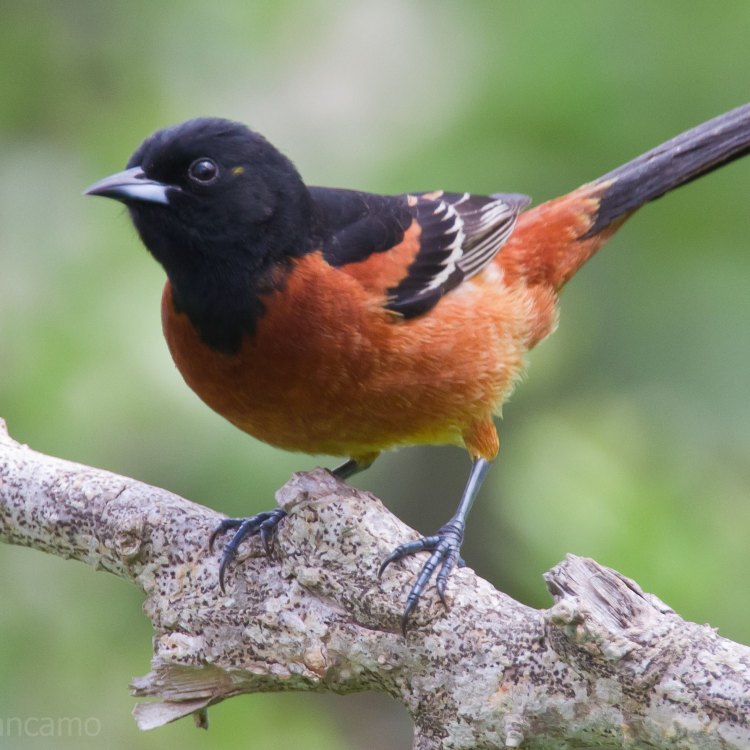
Orchard Oriole
- Adult Size: Small
- Average Lifespan: 3 - 4 years
- Reproduction: Orchard Orioles are monogamous and form pair bonds that last for a single breeding season
- Reproductive Behavior: The male builds the nest while the female chooses the location. The female lays 3-7 eggs and incubates them for about 12-14 days. Both parents take turns feeding the chicks once they hatch
- Sound or Call: The male's song is a series of whistled notes performed at a rapid pace. It is a significant component of the bird's courtship display
- Migration Pattern: Migratory bird species. They migrate to Mexico, Central America, and northern South America for the winter
- Social Groups: Solitary or in small groups during the breeding season
- Behavior: Active and agile birds that frequently move through tree canopies in search of insects and fruit
- Threats: Habitat loss, nest predation, and climate change
- Conservation Status: Least Concern
- Impact on Ecosystem: Orchard Orioles play a role in pollination and insect control
- Human Use: They are admired for their colorful plumage and melodious songs
- Distinctive Features: Bright orange underparts and black upperparts in males, yellowish underparts and olive-green upperparts in females
- Interesting Facts: 1. The Orchard Oriole is the smallest North American oriole species. 2. They breed in a wide variety of habitats, including suburban gardens and orchards. 3. Unlike other oriole species, the Orchard Oriole weaves its nest from plant fibers instead of using animal hair or plant down. 4. The male Orchard Oriole may have multiple mates and defend a territory that contains several nests. 5. They are often found in mixed-species foraging flocks during migration.
- Predator: Predators of Orchard Orioles include snakes, birds of prey, and squirrels
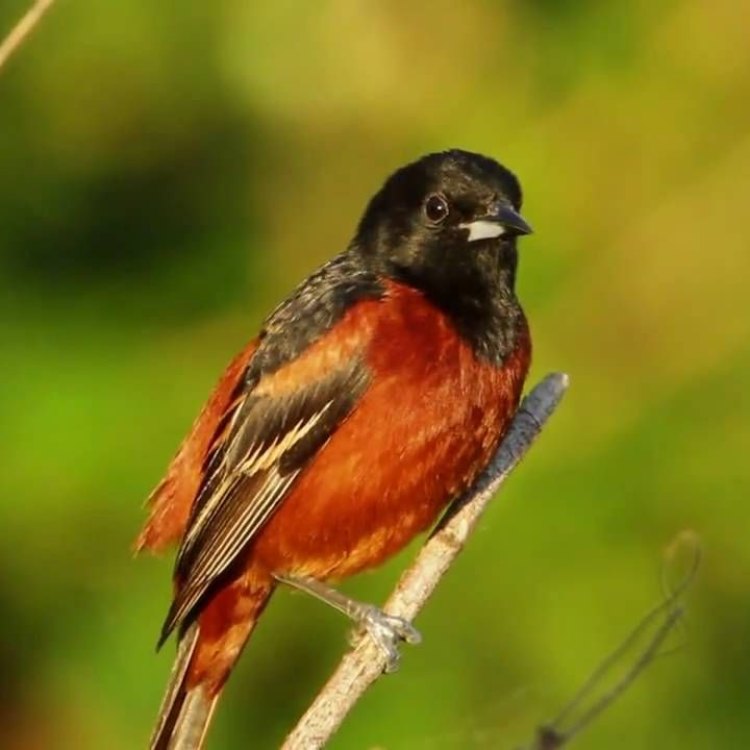
Icterus spurius
The Vibrant Orchard Oriole: A Small but Mighty Migratory Bird
From the lush orchards of North America to the tropical forests of Central and South America, the orchard oriole embarks on an impressive journey twice a year. This brightly colored bird, known for its energetic and melodic courtship displays, is a sight to behold. Despite its small size, the orchard oriole plays a significant role in its ecosystems and has captivated the interest of bird enthusiasts for centuries.In this article, we will explore the fascinating life and unique features of the orchard oriole, from its reproductive behavior and migration patterns to its impact on the ecosystem and its interactions with humans PeaceOfAnimals.Com.
A Small but Mighty Bird
The orchard oriole (Icterus spurius) is the smallest North American oriole species, measuring only 6-7 inches in length and weighing about 1-1.5 ounces. It has a compact, sleek body with a long, thin bill and pointed wings. The male orchard oriole sports a striking plumage of bright orange underparts and black upperparts, while the female has yellowish underparts and olive-green upperparts.With its small size and vibrant colors, the orchard oriole is a true gem among the bird species. Its beautiful plumage and melodious song have earned it a place in the hearts of birders and bird enthusiasts alike.
A Life of 3-4 Years Full of Adventure
The orchard oriole has a relatively short lifespan, averaging 3-4 years in the wild. Despite this, these birds lead active and eventful lives, especially during the breeding season.Orchard orioles are monogamous and form pair bonds that last for a single breeding season Opossum. As the breeding season approaches, the males arrive first in their breeding grounds and establish their territory by singing and defending it from other males.
Once a female arrives, the male will perform an elaborate courtship display that includes flitting around the female, singing, and spreading his wings to display his colorful plumage. The male also builds the nest while the female chooses the location. The nest is woven from plant fibers and is usually located in a dense shrub or tree.
The female will lay 3-7 eggs and incubate them for about 12-14 days. Both parents take turns feeding the chicks once they hatch. The young will fledge after about 12-14 days and will continue to be fed by their parents until they are independent.
The Orchards are Just the Beginning: A Migratory Bird Species
As the breeding season comes to an end, the orchard oriole will embark on a long journey to its wintering grounds in Mexico, Central America, and northern South America. This tiny bird's impressive migratory journey spans thousands of miles, crossing open bodies of water and facing various challenges along the way.The orchard oriole is a migratory bird species, meaning that it travels long distances, typically between its breeding and wintering grounds, in search of food, suitable habitats, and suitable breeding conditions. The timing and routes of these migrations are genetically inherited, and the birds rely heavily on environmental cues, such as day length and food availability, to navigate their journey.
Social Groups and Behavior
During the breeding season, orchard orioles are often solitary or in small groups, but they join mixed-species foraging flocks during migration. These flocks, which can include various bird species, provide protection from predators and greater success in finding food.Orchard orioles are active and agile birds, frequently moving through tree canopies in search of insects and fruit. They are especially fond of the sweet, juicy fruits found in orchards, hence the name “orchard oriole.”
A Thriving Species, but Under Threat
Orchard orioles have a conservation status of “Least Concern,” meaning they are not currently threatened with extinction. However, this does not mean that they are not facing any challenges.Habitat loss and fragmentation due to urban development and agricultural practices are the primary threats to the orchard oriole's population. These birds require a diverse range of habitats, including woodlands, forests, and orchards, to thrive. As these habitats disappear, so do the breeding grounds of the orchard orioles.
Another significant threat is nest predation by snakes, birds of prey, and squirrels. These predators can pose a significant risk to the nests and young orchard orioles. Additionally, climate change, with its unpredictable weather patterns, can negatively impact the orchard oriole's breeding and migration success.
The Impact of Orchard Orioles on Ecosystems
Despite their small size, orchard orioles play a significant role in pollination and insect control in their ecosystems. These birds feed on a variety of insects, including harmful pests, and also consume large quantities of fruit, which helps with seed dispersal.During the breeding season, they also pollinate flowers as they feed on nectar, contributing to the reproduction of various plant species. As pollinators and insect-eaters, the orchard oriole helps maintain a balance in their ecosystems, making them a vital part of the natural world.
The Orchard Oriole and Humans
Orchard orioles have been admired by humans for centuries for their bright colors and melodious songs. They are a popular attraction for birdwatchers and are particularly enjoyed by backyard bird enthusiasts for their love of fruit and nectar feeders.In the past, scientists and bird enthusiasts have kept orchard orioles in captivity to study their behavior and breeding patterns. However, this practice is not encouraged as these birds thrive best in their natural habitat.
Five Interesting Facts about the Orchard Oriole
- The orchard oriole is the smallest North American oriole species, measuring only 6-7 inches in length.- They breed in a wide variety of habitats, including suburban gardens and orchards.
- Unlike other oriole species, the Orchard Oriole weaves its nest from plant fibers instead of using animal hair or plant down.
- The male Orchard Oriole may have multiple mates and defend a territory that contains several nests.
- They are often found in mixed-species foraging flocks during migration.
The Circle of Life: Predators of Orchard Orioles
As with any species, orchard orioles have predators in their natural habitats. Snakes, birds of prey, and squirrels are among the main predators that prey on orchard orioles and their nests. However, these birds have evolved different strategies, such as camouflage and quick flight, to evade these predators.In Conclusion
The orchard oriole may be small in size, but it is mighty in its impact on ecosystems and its unique features. From its vibrant plumage and melodic songs to its impressive migration patterns and role in pollination and insect control, this bird has captured the attention and admiration of humans for centuries. As we continue to face threats such as habitat loss and climate change, it is crucial to protect and preserve the orchard oriole and its habitats for future generations to enjoy.
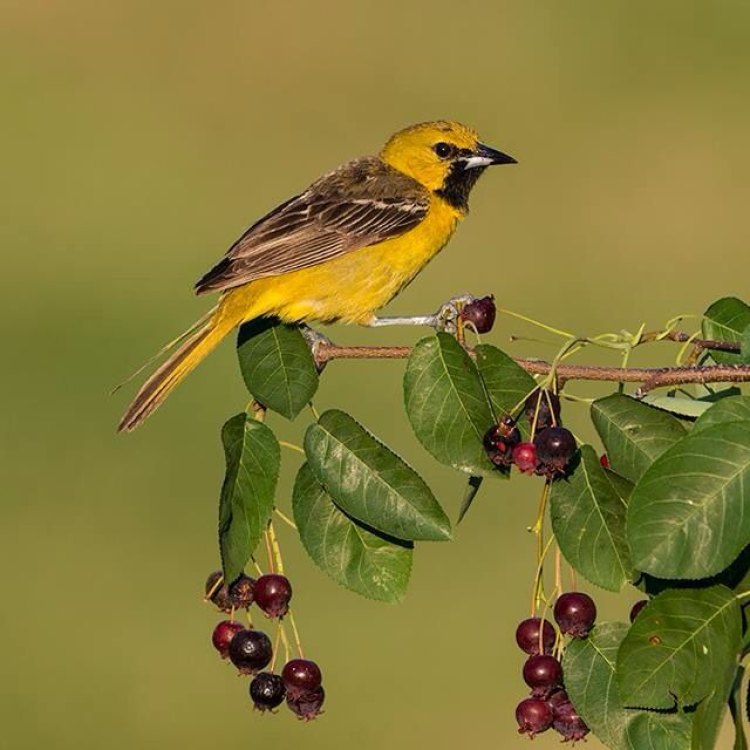
The Orchard Oriole: A Jewel of the North and Central American Skies
Disclaimer: The content provided is for informational purposes only. We cannot guarantee the accuracy of the information on this page 100%. All information provided here may change without prior notice.





